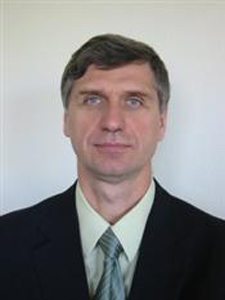Program Information
Evaluation of Respiration Motion-Corrected Cone-Beam CT: Prospective Study in Lung
O Dzyubak*, R Kincaid, A Hertanto, Y Hu, H Pham, A Rimner, E Yorke, Q Zhang, G Mageras, Memorial Sloan-Kettering Cancer Center, New York, NY
TU-G-141-2 Tuesday 4:30PM - 6:00PM Room: 141Purpose: Respiratory motion adversely affects the ability of cone-beam computerized tomography (CBCT) to guide radiation treatment, due to blurring and streaking artifacts. In a prospective patient study, we evaluate respiratory motion-corrected (RMC) CBCT efficacy in reducing motion artifacts and improving localization accuracy and whether a correction model derived from a respiration-correlated CT (RCCT) at simulation is still valid at treatment.
Methods: In an IRB-approved study, lung cancer patients receive an RCCT at simulation, and on one treatment day receive an RCCT, respiratory-gated CBCT, and a one-minute CBCT. A respiration monitor of abdominal displacement is used during all imaging. One-minute CBCT projections are sorted into 10 bins based on abdominal displacement and reconstructed. Each binned CBCT is deformed to the end expiration state using a model derived from RCCT and added to produce an RMC-CBCT. Comparison is made between uncorrected CBCT (NoCorr), RMC(sim) CBCT using simulation RCCT, and RMC(tx) CBCT using treatment RCCT. The gated CBCT, gated at end expiration, serves as the criterion standard for comparison. Each CBCT is registered twice to the gated CBCT, first to align to spine, second to tumor in lung. Localization accuracy is defined as the difference between tumor and spine registration. Agreement in tumor shape with the gated CBCT is evaluated by calculating normalized cross-correlation (NCC) of pixel intensities within the local tumor region.
Results: NCC from RMC(tx) is higher in 12/13 cases compared to NoCorr, and in 7/13 compared to RMC(sim). Tumor position in RMC(tx) is in closer agreement with gated CBCT than for NoCorr in 11/13 cases. Tumor position between RMC(tx) and RMC(sim) agrees within 2mm in all cases.
Conclusion: This correction method reduces motion artifacts and improves localization accuracy in nearly all cases. Motion correction based on the simulation day RCCT or on the treatment day RCCT yields similar results.
Funding Support, Disclosures, and Conflict of Interest: NIH/NCI award R01 CA126993 and research grant from Varian.
Contact Email:


